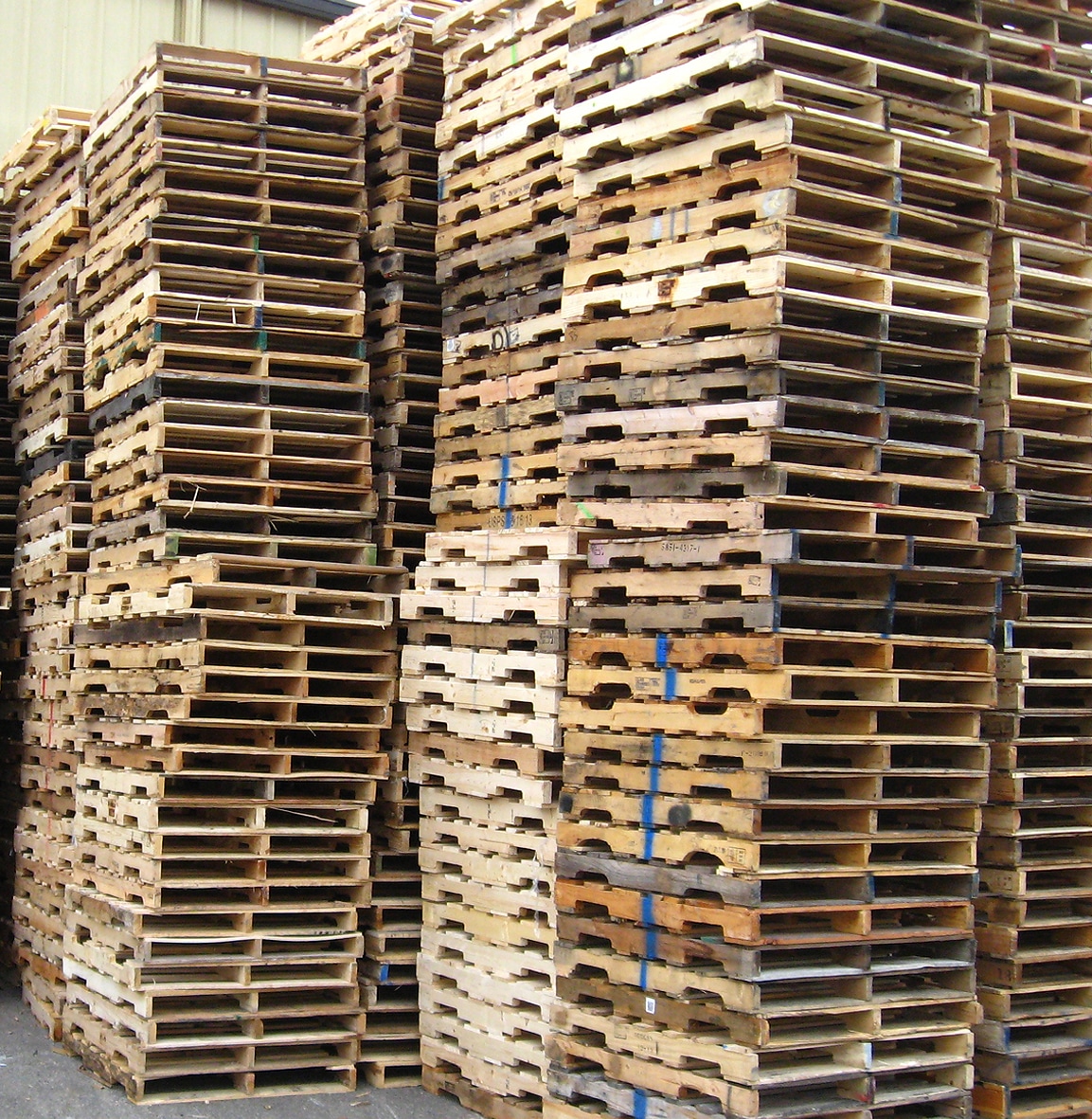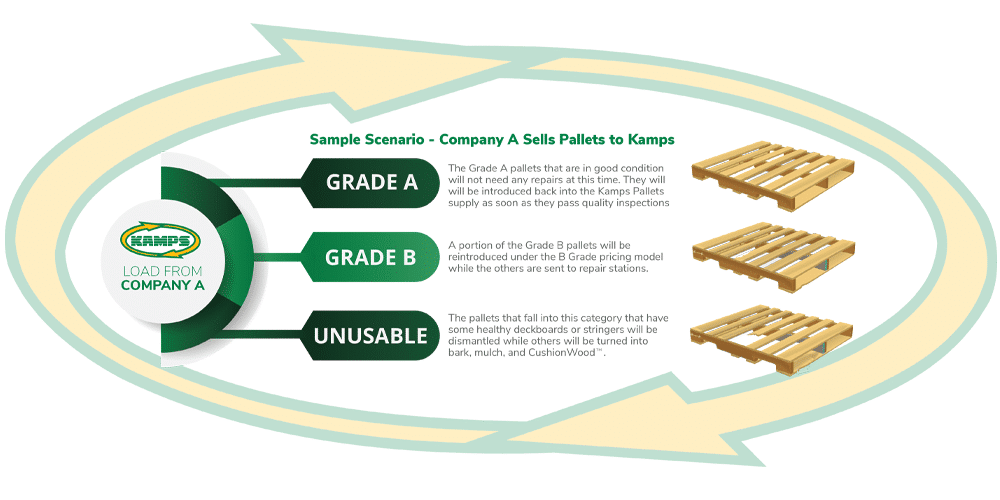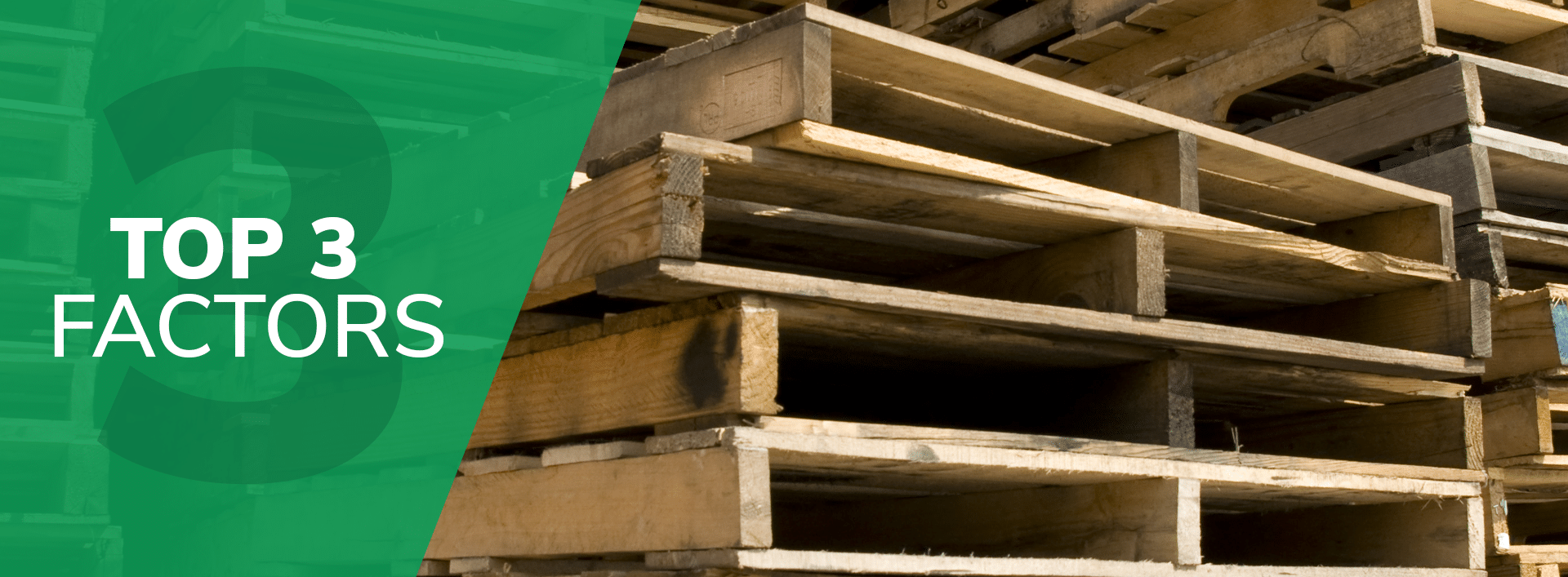Selling pallets back to a pallet supplier is a common practice among businesses large and small. It has become a strategy that not only creates additional revenue streams, but also has a positive environmental impact on our planet. To learn more about the environmental impact selling or recycling pallets can have on our planet, check out our green scorecard.
While the act of selling pallets is rather easy, for certain businesses it can be difficult to pinpoint exactly what determines the value of their pallets.
As a company that has been in business for over 45 years and manages over 100,000,000 pallets annually, we know a thing or two about buying and selling pallets; and throughout these years, we have identified three factors that determine value when selling pallets are. These factors are: size of the pallet, condition of the pallet, and Your location.
The Size of the pallet
Pallet size will (usually) have the most impact on the value of your load when selling pallets.
Industry standard sizes, such as the 48×40 pallet used in grocery stores or the 48×45 pallet used in automotive, will hold a higher value than odd-size or custom sized pallets.
The reasoning for this is rather simple.
Because these pallets are industry standard sizes and widely used nationally, the demand for these pallets is much higher in the marketplace than custom size pallets. A pallet supplier can usually take these pallets and re-insert them into their supply immediately after repairs and quality inspections have been passed. Pallets that are odd-sized / custom will usually require additional effort from the pallet supplier in order for the pallet to be effectively re-inserted into the supply. One of these additional efforts includes dismantling of the pallet and harvesting its components to build new pallets.
How the pallet dismantling process works at Kamps Pallets
The Condition of the pallet

The condition of the pallet has an impact on value because of the amount of energy it will take to successfully re-introduce the pallet into a supplier’s usable inventory.
In order to best illustrate how this works, we will use an example scenario that Kamps Pallets faces every day.
Example Scenario – Company A Sells Pallets to Kamps
Let’s say that Company A is a large health food and supplement retailer. Company A uses GMA 48×40 pallets to ship and store their products on. Over the past couple of days, the company has accumulated around 400 pallets that were used to ship their product from their manufacturing facilities to their distribution center. Company A has a partnership in place with Kamps Pallets to pick up any excess pallets from their distribution centers.
Kamps Pallets picks up the pallets from Company A in a timely manner and takes the load back to our facility for the pallets to be sorted by our experts. Upon sorting, our experts notice that the load picked up from Company A had pallets that were in varying condition. Some had chipped or cracked stringers, others had completely broken or missing deck boards, and a small amount showed some wear and tear.
After sorting the pallets, our experts determined that the load contained 40 A-Grade pallets, 300 B-Grade Pallets, and 100 scrap / unusable pallets. These are standardized grades, sent forth by Kamps, that our experts use to judge the condition of the pallet and whether repairs are needed. A-Grade pallets are valued the highest, while the scrap / unusable pallets have no value.
What happens to these pallets next best illustrates how the pallet’s current condition has great impact on its value.
Grand A Pallets
The A Grade pallets turned out to be in great condition and did not need any repairs. These pallets will be introduced back into the Kamps Pallets supply as soon as they pass final quality inspections. Because of their condition, they also carry a higher market value than the others. It is important to mention that A Grade pallets at times may also need small repairs.
Grade B Pallets
A portion of the B Grade pallets can be safely reintroduced into the Kamps Pallets supply under the B Grade pricing model after passing quality inspections. The other portion of B Grade pallets need minor repairs and are shifted to our pallet repair stations; where our pallet experts will implement repairs such as inserting additional companion stringers or staples onto existing stringers.
Unusable / Scrap
Within the scrap / unusable count there is a small number of pallets that have some deckboards and stringers in good condition. These pallets are taken to our dismantling stations where these healthy components are harvested to be re-used. The rest of the scrap pallets cannot be salvageable in any way and are sent to Kamps’ Wood Resource Solutions Division. Here, they will be placed in a grinder and turned into Mulch or CushionWood.
With this one scenario we can see how both the condition of the pallet and re-sale value can have an impact on the total value of a pallet sold. While some pallets can be sold almost immediately (The A-Grade Pallets), others (Scrap / Unusable Pallets) cannot be salvaged at all and Kamps is resorted to transforming these pallets into a completely new product. This process takes time and energy on multiple fronts.
Sample Scenario Diagram

Your Location
The reasoning behind the impact your location has on pallets being sold is much similar to our first two examples – demand.
Certain locations may be dominated by specific industries. Because of this, pallet suppliers will have a large customer base that belongs to these industries. This, naturally, leads to an increase in demand for industry specific pallets (such as the GMA pallet or automotive standard pallet).
If your company operates within a different industry than those surrounding it, chances are your company will also use different pallets. The local market resale value will tend to be lower for these pallets and the process of reintroducing the pallets into a usable inventory may be more strenuous and lengthier. All of this combined will then lead to a lower overall value for the pallets.
Takeaway: How to Get The Most Value When Selling Pallets
In order to understand how value is determined when selling pallets it is most important to remember to follow the pallet through its complete journey. When a pallet is sold the pickup by the pallet company is the initial step in this journey. After this step, the pallet will go through multiple stages where size, condition, and location all come into play when determining where and how the pallet will end up being re-used. Outside factors, like market demand, are interwoven into this journey and make a sizable impact.
Once we know and appreciate this notion, we can naturally start to see why working with a national pallet supplier is the best way to ensure that your business is getting the most value out of your used pallets.
At Kamps, we have over 100 locations nationwide that are actively buying and selling a wide range of pallets. Schedule a consultation with one of our pallet experts today to learn more about how Kamps Pallets can boost your pallet program.



